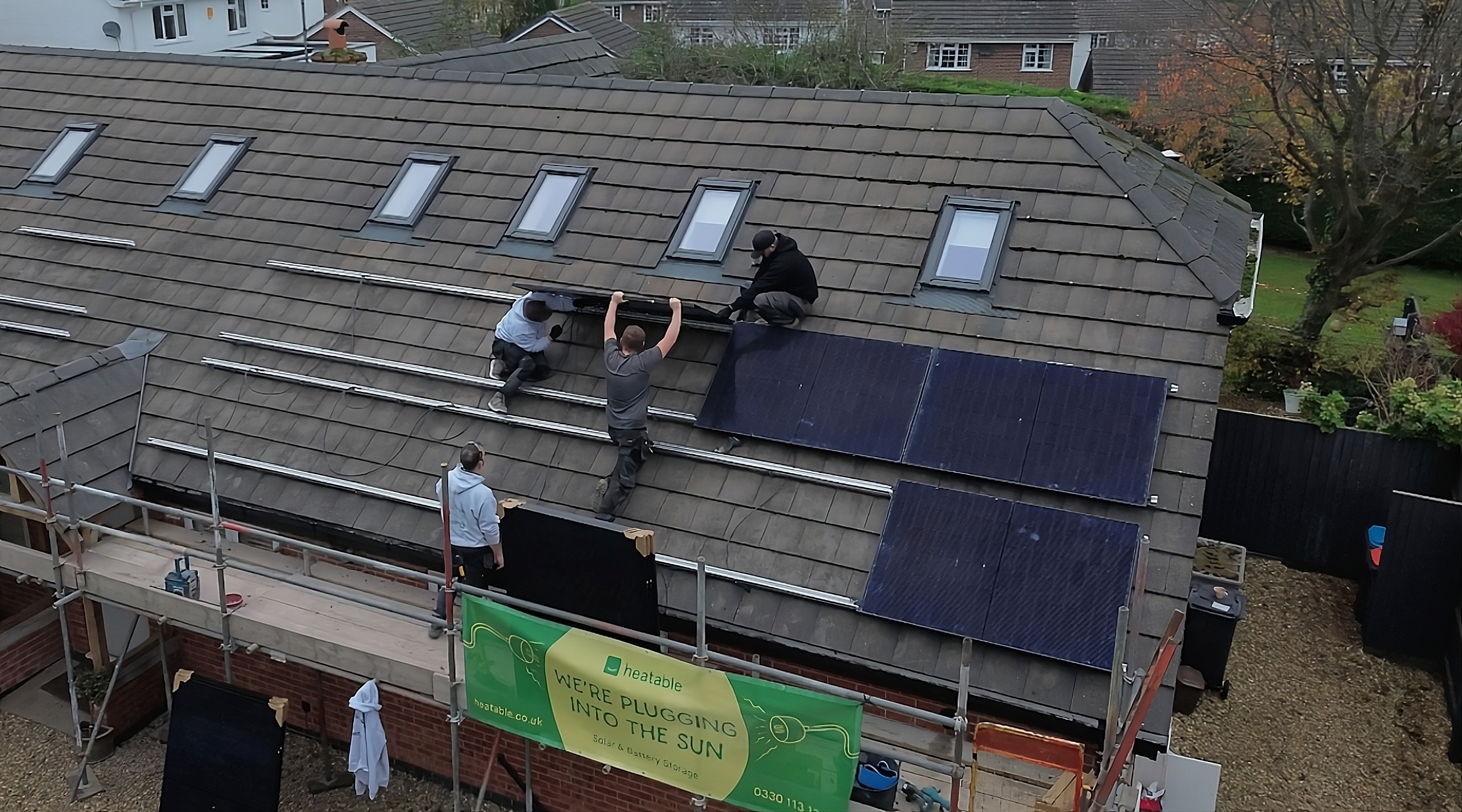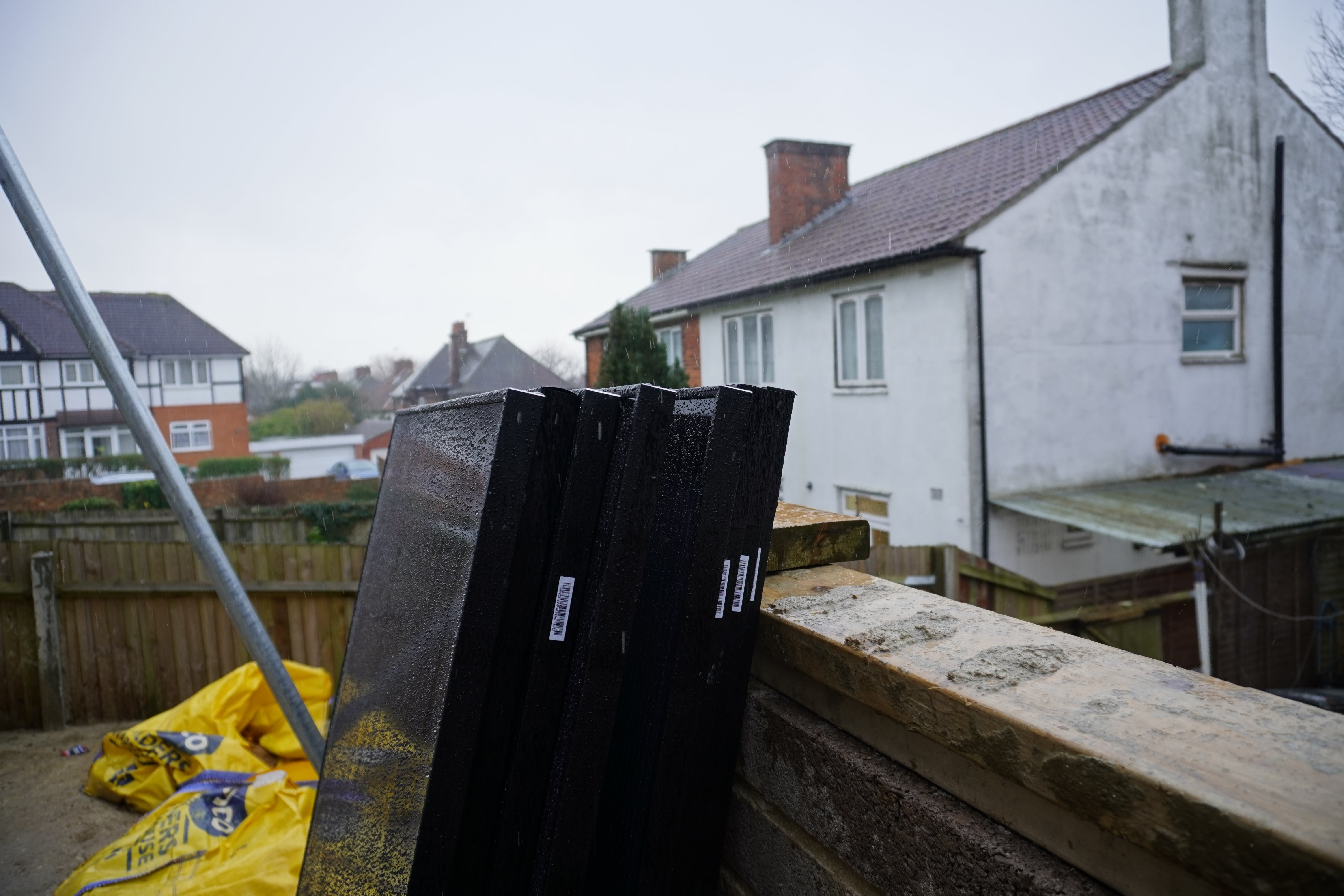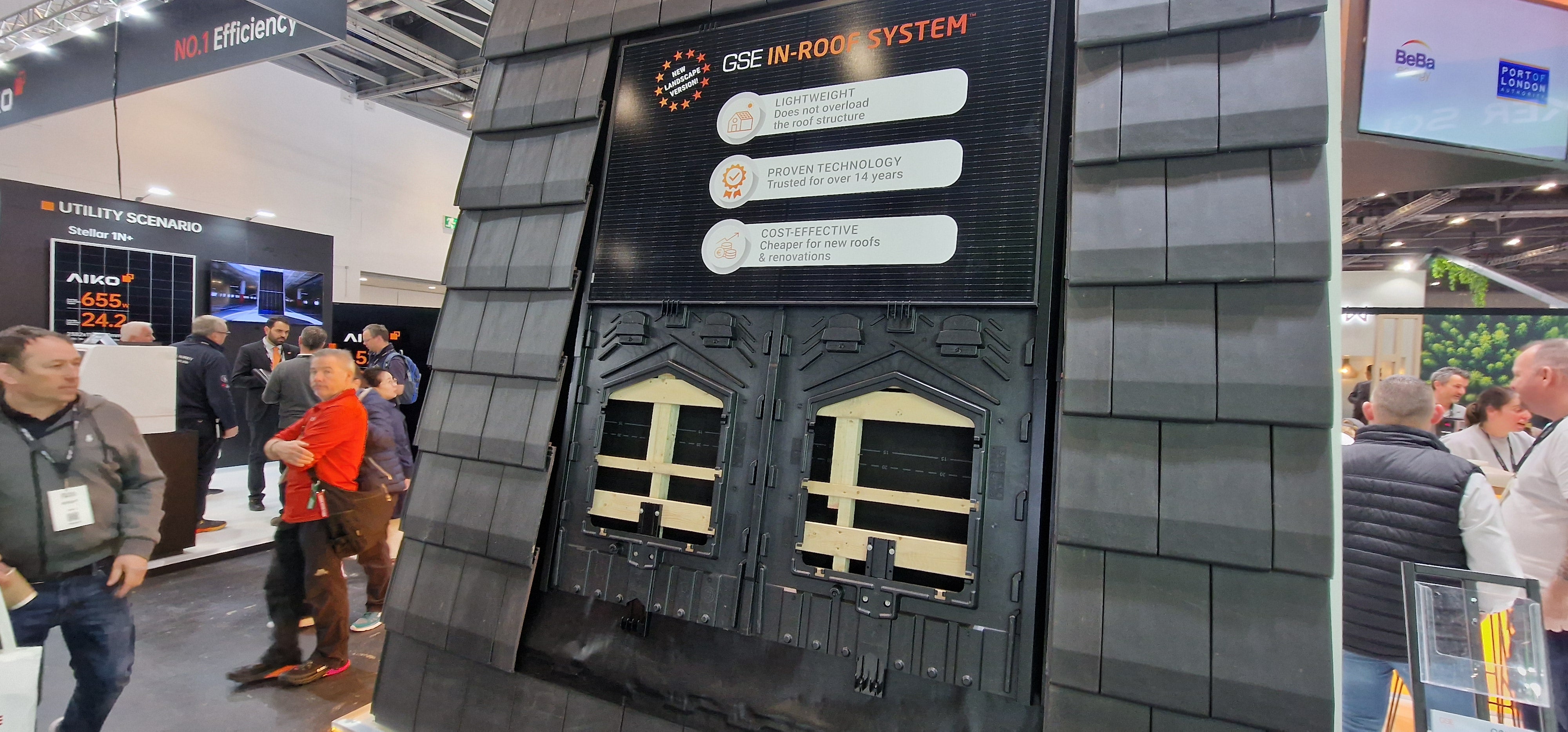In September 2025, the average cost of solar panels for a typical three-bedroom UK home ranged from £5,000 to £9,000, depending on system size, equipment quality and whether you include a battery.
- A standard 4.5kW system typically costs about £6,500 to £8,000 installed.
- Adding a 5kWh solar battery can add £4,000 to £6,000 – albeit with the potential to roughly double your savings.
- Through the Smart Export Guarantee (SEG), households may earn 12–15p per kWh for exported energy, helping shorten the payback window (the time it takes for solar panels to save you as much money as they cost to install in the first place).
- On average, the payback period is 8–12 years; after this, most homeowners enjoy a decade or more of mostly free electricity plus export income.
With energy costs rising and incentives shifting, one of the first questions many households ask is: are solar panels worth it? Alongside that, many want to know the true cost of solar panels for their home, and which systems stand out. In this guide, we examine how pricing is built, what drives return on investment, and which features distinguish the best solar panels on the UK market today.
Installer Lloyd Greenfield, founder of Glow Green, explains that there has been a notable market shift since the energy crisis: “During the energy crisis, solar panel costs spiked, but since then we’ve seen significant price drops as manufacturers recovered stock. Today, the pound-per-watt cost has stabilised, even as panels get physically larger and more powerful.”
Homeowners echo the logic of investing in control over energy costs. As Justin Webb, who installed panels on his Somerset home two and a half years ago, says: “I liked the idea of generating my own electricity, which would put me in control of my energy price. Along with petrol, it was the biggest variable in our household bills.”
In this guide, we’ll break down the average cost of solar panels in the UK, explain how prices vary depending on system size and property type, and show you how much money you can save through lower energy bills and export tariffs.
We’ll also cover payback periods, financing options, the latest incentives available to UK households and share real-world experiences from both installers and homeowners, such as Greenfield and Webb.
What affects the cost of solar panels?
Several factors determine the final bill when you install solar panels:
- System size
- Panel type and efficiency
- Roof suitability
- Installer rates
- Battery storage
- Financing choice
System size
The bigger the system you install, the more it will cost up front, but larger systems typically deliver better value for money. A 3kW system suitable for a small home might cost about £5,000, whereas a 6kW system could be closer to £9,000. However, the larger system produces more electricity and often has a faster payback period, because fixed costs such as scaffolding and labour are spread across more panels.
Panel type and efficiency
Monocrystalline panels are the most efficient and compact, meaning they generate more power per square metre, but they are also the most expensive. Polycrystalline panels are cheaper but take up more space for the same output. Thin-film panels are flexible and low cost but are rarely used in UK domestic installations because their efficiency is significantly lower. Choosing higher-wattage panels may mean spending more up front but, as Greenfield explains, this leads to much better returns over the system’s lifetime.
Roof suitability
Not every roof is created equal when it comes to solar. South-facing roofs without shading generate the most power, while east- or west-facing roofs, or those shaded by trees and chimneys, produce less. In some cases, strengthening or repairing a roof before installation can add to costs. When getting a quote for your system, Webb stresses the importance of ensuring the installer tailors the quote to the specifics of your property, including roof angle and shading.
Installer rates
Labour costs and installer overheads vary. Large national firms may charge more but often have wider support networks, while local solar panel installers may offer more competitive quotes and personalised service. Accreditation matters, too: installers certified by the Microgeneration Certification Scheme (MCS) and Energy Performance Validation Scheme (EPVS) provide added confidence that the system design and performance estimates are accurate, which can influence both cost and long-term savings.
Battery storage
Adding a battery increases the overall installation cost by £4,000 to £8,000, depending on its make and capacity, but it can dramatically improve self-consumption. Without a battery, most homes use only around 30 per cent of the energy they generate from solar panels, exporting the rest back to the grid. With a battery, self-consumption can rise to more than 70 per cent, meaning greater bill reductions and a shorter payback period.
Financing choice
How you pay for your solar panels affects the lifetime cost. Paying in cash delivers the best return on investment. Financing options, such as loans offered by installers, can help spread the cost but usually involve higher interest rates. Green mortgages can provide favourable terms, including 0 per cent APR options, which can make the upfront investment more manageable without eating into long-term returns. There is also a number of solar panel grants and funding options available to people who qualify.

Solar panel costs explained
The cost of solar panels has tumbled since production started about 50 years ago, and they are now the cheapest they have ever been.
The price of each solar panel can range from about £100 to £500, so they make up a relatively small proportion of the overall cost, which includes fitting and connection. This is because the price of labour has surged over the same timeframe, and for domestic installations, fitting can be your biggest cost.
When you pay for a solar installation, you are not just buying panels. Your total spend is made up of several components, each of which contributes to the overall bill in different ways...
Type of solar panel
The panels themselves account for about 25–30 per cent of the overall cost of solar panels. Monocrystalline models are the most expensive but also the most efficient, producing more power in the same footprint. Polycrystalline and thin-film panels are cheaper, but they generate less electricity for the space they take up. While panel prices have dropped significantly over the past decade, the choice you make here still has a big impact on upfront costs.
Installation costs
Installation – including scaffolding, labour, wiring, and certification – usually represents 30–40 per cent of the total bill. Even though the price of solar panels has decreased, labour costs have increased, which means installation is now one of the biggest cost-drivers. Scaffolding alone can run into the thousands for complex or tall roofs, and this is a fixed cost whether you install a small or large array.
Adding a solar battery
If you include a battery, this will be one of the largest single line items in your quote. A typical 5–10kWh battery costs £4,000 to £8,000, often making up an additional 30–40 per cent of your spend. The benefit is that it increases self-consumption dramatically, enabling households to use more than 70 per cent of their generated electricity, instead of the 30 per cent typical usage without a way to store excess energy produced.
Inverter
Every solar system requires an inverter to convert the direct current (DC) produced by panels into alternating current (AC) that your home appliances use. Inverters generally cost £600 to £1,000 and make up about 10 per cent of the total bill. They typically need to be replaced once in the system’s lifetime, after about 10–15 years. Some households opt for micro-inverters on each panel, which can improve efficiency on shaded roofs but add to upfront costs.
Maintenance
Solar panels themselves require very little maintenance because they have no moving parts. Most households in the UK can get away with letting rainfall keep panels clean. However, in dusty or polluted areas, or near trees where bird droppings or debris collect, occasional cleaning may be worthwhile. Professional cleaning costs about £100 to £200 per visit, and many homeowners schedule this once every two to three years. Annual maintenance checks are also available from some installers, but these are optional rather than essential.
Roof repairs
If your roof is in poor condition, you may need repairs before installing solar panels. This cost is not part of a standard solar quote but can add several thousands of pounds to your total spend. Because panels are designed to last 25–30 years, your roof must have a similar lifespan. Addressing issues such as loose tiles or leaks beforehand ensures you don’t have to remove the panels later to fix underlying problems, which would add significant expense.
Below is a quick summary of the prices you can expect to pay:
Household size | System size in kW | Number of solar panels | Array cost | Battery size and cost | Total cost |
3-bed | 3.6kW | 8 | £4,990 | 5kWh £1,750 | £6,740 |
4-bed | 5.4kW | 12 | £5,470 | 5kWh £1,750 | £7,220 |
5-bed+ | 9.9kW | 22 | £7,390 | 5kWh £1,750 | £9,140 |
How can I reduce the cost of solar panels?
Although solar panels are a significant upfront investment, there are several ways to reduce the cost or quicken the payback period.
Grants and schemes
The UK government has introduced a number of measures to make solar more affordable. One of the most significant is the temporary removal of VAT on domestic solar panel installations, which runs until 2027. Normally, VAT would add 5 per cent to the total bill, but, currently, households pay zero VAT on panels, batteries, and related equipment. This alone can save several hundreds of pounds on a typical system.
For low-income households, the Energy Company Obligation (ECO4) scheme can fund energy-efficiency improvements, including solar panels, at no cost to the homeowner. In Wales, the Nest warm homes programme also supports eligible households with free or subsidised installations.
What’s more, many local authorities partner with Solar Together, a group-buying initiative where councils negotiate bulk discounts on behalf of residents. Households sign up and installers compete for the contract, often driving down costs by up to 30 per cent.
Subscription options
Some newer companies are experimenting with subscription-style models, where instead of paying the full cost upfront you pay a monthly fee for solar panels and, in some cases, a battery. The installer retains ownership of the equipment while you benefit from lower bills. These schemes can make solar more accessible to households without savings, though they usually deliver less long-term return, compared with outright ownership.
Payback options
Once your system is installed, there are ways to shorten the payback period. The most important is signing up for the Smart Export Guarantee (SEG), which ensures you are paid for every kilowatt-hour of electricity you export to the grid. Rates vary by supplier but typically sit between 12p and 15p per kWh in 2025. Some energy companies only pay a few pence, so it pays to shop around.
Financing options also affect payback. Traditional installer financing often comes with high APRs, lengthening the payback period. However, as Webb discovered, some mortgage lenders now offer green financing deals.
“Nationwide, my mortgage lender, will lend me at 0 per cent APR if I wanted to do the same again,” he says. “If I move, that would be a choice of mortgage provider I’d go with because I know I can put solar on and finance it interest-free.”
These green mortgages enable homeowners to spread the cost of solar without interest charges, significantly improving the overall return on investment.
How to get the best deals on solar panels
Gather multiple quotes
One of the most effective ways to secure the best price for solar panels is to request quotes from at least three different installers. Each company will have its own preferred brands, labour rates, and approach to installation, so prices can vary widely. By comparing quotes side by side, you can make sure you are getting fair value and identify any unusually high or suspiciously low offers.
Compare equipment and warranties
Not all solar panels or inverters are created equal. When comparing quotes, check the wattage of the panels, the efficiency ratings, and the expected lifespan. Pay close attention to warranties: most panels now come with 25- to 30-year performance guarantees, while inverters usually carry 10–15 years of cover. A slightly higher upfront cost for solar panels may be worth it if it comes with longer protection and stronger performance.
Choose accredited installers
Accreditation is an important safeguard. Look for installers certified under the MCS and backed by the EPVS. These accreditations mean the system design has been independently verified and that performance claims are realistic. To compare trusted providers, read our dedicated guide to the best solar panel installers.
Consider local vs national installers
Large national firms often have more resources and broader customer support, but local installers may be more competitive on price and offer a more personalised service. Webb chose a local company and really valued their hands-on approach.
“A lot of companies used satellite imaging, but I chose a local installer who came to the house and gave me honest advice about what made financial sense,” he said.
Local firms are also more likely to be available quickly if you need follow-up support, whereas national providers can be slower to respond. On the other hand, smaller, local firms might be more liable to go bust than large national businesses.
Balancing price, service, and trust is key when making your choice.

How much money can I save with solar panels?
How much you save with solar panels depends on your household’s energy use and the amount of sunlight your property receives. To illustrate the potential savings, we spoke with Wendy Conner, a homeowner in Bristol, who recently had solar panels installed on her property. Before going ahead, Wendy calculated what her energy costs would look like with and without solar, the savings she could expect, and how long it would take to pay back her investment.
“I wanted to know exactly what I was getting into,” she says. “Once I saw that the panels could cover a big chunk of my usage and even earn me money back through the grid, it made the decision much easier.”
Conner’s calculations provide just one example, but the same approach can be applied to any home by adjusting for system size, location, and usage habits.
According to MCS sunlight data, Bristol (Zone 5E) has an irradiance factor of 928. Using this figure, you can estimate the annual generation of a solar panel system with the formula: system size × irradiance factor × shade factor = annual output.
For Conner’s 5.5kWp system with no shading, the output works out as 5.5 × 928 = 5,064kWh in Year 1.
Cost of electricity without solar panels
In Conner’s case, grid electricity consumption was estimated at 10,276kWh per year. At the time of her installation, she was charged a unit rate of 28p per kWh, which equates to £2,877, plus a standing charge of 45p per day (£164). Together, her annual bill without solar would have been £3,041.
Cost of electricity with solar panels
Her 5.5kWp system produced 5,064kWh in the first year. Without battery storage, around 32 per cent of this generation was assumed to be used directly in the home — that’s 1,620kWh. At 28p per kWh, this equates to a saving of £450. The remaining electricity is exported to the grid under the Smart Export Guarantee, earning about £127. Combined, Conner’s total Year 1 benefit is £577.
Investment value of solar panels
Installing a system of this size costs about £8,750. With £577 in annual savings and income, that’s a Year 1 nominal return of 6.6 per cent. To project ROI, we make conservative assumptions: panel degradation of 0.7 per cent per year, retail price inflation of 2.2 per cent, and energy price inflation of 8 per cent. While recent years have seen far higher energy price rises, these figures reflect more typical conditions.
Taking these assumptions into account, Conner’s system is on track for payback in about 12 years. This includes the cost of replacing the inverter, which usually needs to be done after 10–15 years at a cost of about £1,000. Given that panels can last 25–30 years, this leaves at least a decade of free electricity once the system has paid for itself.
Below is a table mapping out Conner’s projected savings over 15 years.
Saving | SEG | Total | Cumulative savings | ROI | |
Year 1 | £450 | £127 | £577 | £577 | 6.6% |
Year 2 | £483 | £130 | £613 | £1,190 | 7% |
Year 3 | £518 | £131 | £649 | £1,839 | 7.4% |
Year 4 | £556 | £133 | £689 | £2,528 | 7.9% |
Year 5 | £596 | £135 | £731 | £3,259 | 8.4% |
Year 6 | £640 | £137 | £777 | £4,036 | 8.9% |
Year 7 | £686 | £140 | £826 | £4,862 | 9.4% |
Year 8 | £736 | £142 | £878 | £5,740 | 10% |
Year 9 | £790 | £144 | £934 | £6,674 | 10.7% |
Year 10 | £848 | £146 | £994 | £7,668 | 11.4% |
Year 11* | £910 | £148 | £58 | £8,726 | 0.7% |
Year 12 | £976 | £150 | £1,126 | £9,852 | 12.9% |
Year 13 | £1,047 | £153 | £1,200 | £11,052 | 13.7% |
Year 14 | £1,124 | £155 | £1,279 | £12,331 | 14.6% |
Year 15 | £1,206 | £157 | £1,363 | £13,694 | 15.6% |
*savings are reduced in Year 11 due to estimated cost of a new inverter
It’s important to point out that these figures are just educated guesses. Many factors can change the time it takes for your solar panels to deliver a return on investment. Purchasing an electric car, for example, will increase your energy consumption, as will items such as hot tubs. Shifting to working from home can also affect the amount of energy you consume during the day. Nevertheless, the table above gives you a ballpark timeline for when you can expect payback.
If you would like to calculate your own savings, the Energy Saving Trust offers a free solar calculator to help households estimate their own savings and break-even point, tailored to their location and energy use.
ROI examples at a glance
The table below compares the ROI for two common system sizes, showing how upfront cost, output, savings and payback vary.
System size | Average cost | Annual output | Annual savings | Payback period |
3kW | £5,000 | ~2,800kWh | £450–£500 | ~11 years |
4.5kW | £6,500–£8,000 | ~4,200kWh | £650–£750 | 9–10 years |
These examples show how system size influences ROI. A larger system has a higher upfront price, but it also produces more electricity and typically pays for itself faster on a per-watt basis. The exact payback will vary depending on your roof, location, and energy use, but the same calculation method applies to any household: compare annual savings and SEG income to installation costs to estimate when your investment will break even.
Average solar panel savings based on system size
There are economies of scale in buying solar panels. In other words, almost tripling the number of solar panels you fit, from eight to 22, only moves the price up by about a half. According to fitters Glow Green, a decently sized array of 22 450W panels delivering up to 9.9kW will cost £7,948, including fitting.
This means buying a bigger system should mean a quicker return, since your price per watt of output should be lower.
A number of things conspire to complicate the maths, though. Much will depend on what price you get for your exported electricity. Tariffs vary widely, but if you keep on top of things you should be able to get about 15p per kilowatt hour.
A bigger array may require more maintenance, which could increase your costs. If you use lots of energy during the day, when the panels are generating, you will save more. If energy prices go up you will save more, but if they go down, you will save less.

How to get a quote for solar panels
Getting a reliable quote is one of the most important steps in the process of going solar. A good quote should be clear, detailed, and tailored to your home’s specific energy needs and roof conditions.
Start by reading our guide to the best solar panel installers to identify trusted companies with strong track records. This will give you a shortlist of providers who are MCS-certified and meet industry standards.
Ask about wattage, inverter brand, warranty, SEG registration
When reviewing quotes, check the technical details. What wattage are the panels, and how efficient are they? Which brand and type of inverter will be used, and what is its expected lifespan? Make sure panel warranties extend at least 25 years and that inverters are covered for 10–15 years. Finally, ask whether the installer will handle your Smart Export Guarantee (SEG) registration, so you can start earning money from exported electricity right away.
Ensure site survey (not just desk quote)
While many companies use satellite imagery to provide quick estimates, these aren’t always accurate or won’t account for roof shape or shading.
A site survey enables the installer to check roof shading, angle, and structural condition — all factors that affect performance and cost. Without a physical survey, you risk getting a system that doesn’t match your home’s needs.
Ask the right questions
Webb highlights the importance of digging into the detail: “I was asking what equipment they were going to fit, what inverter, what panels, how long it would take, and what guarantees applied. I wanted to know if the battery warranty covered unlimited charge cycles, because I planned to charge it nightly.”
By asking these types of granular questions, you can ensure that the system quoted is exactly what will be installed, and that the performance and savings projections are realistic.
Our methodology for calculating solar panel costs
When we calculate the cost of solar panels, we draw on a combination of industry data, installer quotes, and real-world homeowner experiences to give readers the clearest picture possible on the true cost of solar panels. Our approach includes the following steps:
- Market data and installer quotes – We use typical price ranges from trusted national and local installers, including companies such as Glow Green and Heatable. These provide a baseline for the average cost of different system sizes, from small 3kW arrays to larger 6kW+ installations.
- MCS irradiance data – To estimate how much electricity a system will generate in different parts of the UK, we use irradiance figures published by the Microgeneration Certification Scheme (MCS). These figures vary by location: a home in Bristol will produce more electricity than one in northern Scotland, even with the same system size.
- Performance assumptions – We assume panel degradation of around 0.7 per cent per year, which reflects industry norms. We also take into account that without a battery, most homes will use about a third of their generated electricity, exporting the rest to the grid.
- Tariffs and payback – For exported electricity, we use Smart Export Guarantee (SEG) rates, typically 12–15p per kWh in 2025. We then compare the annual value of self-consumption and export payments to the upfront cost of installation to estimate payback periods.
- Homeowner insights – We incorporate experiences from real customers, such as Justin Webb, who stress the importance of tailored quotes and checking assumptions.
“The fundamental thing about getting a quote was making sure they gave me the right advice for my house, such as which roof was suitable, where the panels should go, and how much they’d realistically generate,” Webb explained.
Greenfield also emphasises using independent validation when comparing costs. “Homeowners sometimes focus on the cheapest upfront price, but that can mean being quoted for lower-wattage panels. Spending a little more on higher-wattage panels will generate more power in the same footprint, giving better long-term savings and payback.”
By combining verified data, installer information, and homeowner experiences, we aim to give readers a balanced view of both the costs and the returns they can expect from investing in solar panels.

Common myths about solar panel costs
“Solar only works in sunny countries.”
A common misconception is that solar panels are only worthwhile in countries with high levels of sunshine, such as Spain or Australia. In reality, the UK receives plenty of daylight hours, particularly in the summer, and modern panels are highly efficient even under cloudy conditions. Germany, which has less sunlight than southern England, is one of the world leaders in solar adoption. As Greenfield notes, today’s solar panels are bigger and more powerful than ever, meaning homeowners can achieve good returns even in less sunny climates.
“It takes decades to pay off.”
Another myth is that solar panels take 20-30 years to pay for themselves. This may have been true when technology was more expensive, but today’s systems typically pay back in 8–12 years. Webb, for example, expects his system to cover its costs in about a decade, and expects to enjoy decades of free electricity afterwards. For many households, the payback period is shorter than the lifespan of a boiler or car.
“Batteries aren’t worth it.”
Some believe adding a battery is an unnecessary expense, but this overlooks the value of storing daytime energy to use at night. While a 5–10kWh battery does add £4,000 to £8,000 to the upfront cost, it enables households to use more than 70 per cent of the energy they generate, compared with about 30 per cent without one. For people who use a lot of power in the evenings, or who own electric vehicles, batteries can significantly cut bills and provide energy security during outages.
“Panels make your home harder to sell.”
A lingering concern is that solar panels could reduce a property’s value or make it more difficult to sell. Evidence suggests the opposite: studies show that homes with solar typically sell faster and for more, with an uplift of about £5,000 to £10,000. As Webb observed, most buyers would choose a home with solar and a battery over an identical one without, because they know it will mean lower running costs from day one.
Future of solar costs in the UK
Falling panel prices
Although supply chain disruptions during the energy crisis temporarily pushed up the price of panels, the long-term trend is one of falling costs. Manufacturing efficiencies and increased global production have made panels cheaper to produce, and competition among installers continues to drive down consumer prices. Lloyd Greenfield points out that prices today are lower than they were just a few years ago, despite panels being larger and more powerful. This means homeowners can expect the upfront investment for solar to become more affordable over time.
Rising efficiency
At the same time as costs have fallen, efficiency has improved. A decade ago, most panels produced 200–250W each; today, 400–500W panels are standard, and some manufacturers are pushing beyond 600W. This means that even homes with limited roof space can install fewer panels and still generate significant amounts of electricity. The combination of higher efficiency and lower costs increases the return on investment for new systems.
Net zero 2050 policy drivers
The UK’s legally binding target of reaching net zero emissions by 2050 is likely to encourage continued government support for solar. Policies such as the zero VAT rate on installations until 2027 and the Smart Export Guarantee already provide financial incentives. As the country pushes to decarbonise heating and transport, demand for clean electricity will grow, and solar panels are expected to play a central role in meeting that need. Further subsidies or schemes could emerge as the government seeks to accelerate adoption.
Battery adoption and smart tariffs
The future of solar is closely tied to advances in battery storage and smart energy tariffs. Falling battery prices make it more attractive for households to store excess power and use it in the evenings, improving savings. At the same time, energy suppliers are introducing smart tariffs that enable customers to charge batteries when prices are low and discharge them when prices are high.
Webb has already benefited from this with his EV tariff. “In winter, I top up my battery overnight at 9p per kilowatt on an EV tariff. That sees me through the day, so instead of paying 39p or 45p, I’ve fixed my price at 9p.”
These developments mean that future solar adopters will have more tools at their disposal to maximise savings, making the investment case for solar even stronger.
How we made this guide
We spoke to solar companies and fitters across the UK as well as insiders in the solar market to deliver the best research on solar costs in the UK today.
Why you can trust us
The Independent has been reporting on green energy and climate matters since it was founded in 1986. Since then, we have written hundreds of reviews and news stories on energy, including the best solar fitters and various other guides on green power.
FAQs
Do solar panels increase the value of my home?
Yes – while the exact figure varies depending on the property, studies suggest that solar panels can add between £5,000 and £10,000 to a home’s value. Buyers increasingly see solar as an attractive feature, because it guarantees lower energy bills and a degree of protection from volatile energy prices. For many buyers, solar is a sign the property is future-proofed for rising energy costs and electrification.
What is the average cost of solar panels in the UK?
In 2025, most UK homeowners can expect to pay between £5,000 and £9,000 for a standard 4–5kW solar panel system, depending on roof size, location and panel efficiency. Adding a 5kWh battery can increase costs by £4,000 to £8,000 but can also double potential savings. Prices have dropped significantly since the 2022 energy crisis, and installation costs have stabilised as supply chains recover. Always compare multiple quotes to ensure you’re paying a fair market rate.
What factors influence the cost of solar panels?
Several variables determine final price: system size (measured in kilowatts), panel efficiency, roof access and condition, inverter type, and whether battery storage is included. Premium panels from leading brands may cost more upfront but degrade slower and produce more power over time. Labour and scaffolding costs can also differ regionally. Understanding these factors helps you compare quotes on a like-for-like basis, and avoid hidden extras.
How long do solar panels take to pay for themselves?
Payback periods vary by energy usage and tariff rates, but most UK households recover their investment within 8–12 years through bill reductions and export payments. Larger households with higher electricity demand often see quicker returns, especially when they install batteries to store excess energy. Once paid off, panels typically deliver at least another decade of free or low-cost electricity, offering one of the strongest long-term returns among home energy upgrades.
Do solar panels really save money in the long run?
Absolutely – a well-designed solar system can cut annual electricity bills by 50–70 per cent, and even more if you add a battery. With payback achieved in less than a decade for many households, savings often exceed £20,000 over a system’s lifespan. The SEG provides extra income for exported power, while long warranties (typically 25–30 years) ensure strong returns. In short, solar remains one of the most reliable ways to future-proof against rising energy costs.
Are there any government grants or incentives for solar panels?
Yes, UK homeowners benefit from zero VAT on domestic solar installations until at least 2027, saving 20 per cent on upfront costs. The Smart Export Guarantee (SEG) pays you for surplus electricity sent to the grid, with rates currently between 12-15p per kWh from many suppliers. Some local authorities also run green-energy grants or financing schemes, so it’s worth checking regional options before committing to installation. For more, see our guide on solar panel grants and funding options.
How many panels do I need for a 3-bedroom house?
A typical three-bedroom UK home will need about 10–15 solar panels, depending on the wattage of the panels and the household’s annual electricity consumption. For example, using 400W panels, 12 panels would create a 4.8kW system — enough to cover much of the average home’s energy needs. Roof size, orientation, and shading will also affect how many panels are suitable. Installers will calculate your required system size based on your annual kilowatt-hour usage and the usable roof area, so panel count can vary widely between households.
What happens if I move house?
If you move, your solar panels stay with the property. The new homeowner can take over the Smart Export Guarantee contract or set up a new one with their supplier, meaning they immediately benefit from lower bills. Far from being a drawback, solar often makes a home more appealing on the market. According to estate agents, eco-friendly features such as solar panels and EV chargers are increasingly sought after, and buyers are willing to pay a premium for properties that already have them in place.
How long do solar panels last?
Most solar panels come with performance warranties of 25-30 years, and many continue producing electricity well beyond that timeframe, though at slightly reduced efficiency. The main component likely to need replacement sooner is the inverter, which usually lasts 10–15 years. With regular maintenance and occasional cleaning, panels themselves can easily exceed three decades of useful life, making them one of the most durable home energy investments available.
Do I need planning permission for solar panels?
In most cases, you do not need planning permission to install solar panels on your home, as they fall under permitted development rights. There are exceptions though – if your property is a listed building, in a conservation area, or if you plan to install panels on a flat roof, you may need to seek approval from your local council. Installers familiar with local regulations can advise you, and checking with your planning authority before installation is always recommended.

How much does it cost to pigeon-proof solar panels?
Imagine the scene – you have had nice shiny panels installed and then the gap between the panel and your roof becomes a nest for pigeons or, worse, a colony of noisy seagulls. You can avoid that by pest-proofing your panels.
One way to is recess the panels in your roof, an expensive solution but a very visually pleasing one. This makes most sense if you are having your roof overhauled anyway. This will cost hundreds of pounds, depending on the number of panels, but you will save money on tiles, as you can see in the picture above.
A cheaper solution is fitting bird spikes, which will put them off landing. These start at about £25. A compromise between these two is bird netting, which costs up to £200 for an average roof, plus fitting costs. This is best done when the panels are installed.

.jpeg)

















.jpeg)













 English (US) ·
English (US) ·